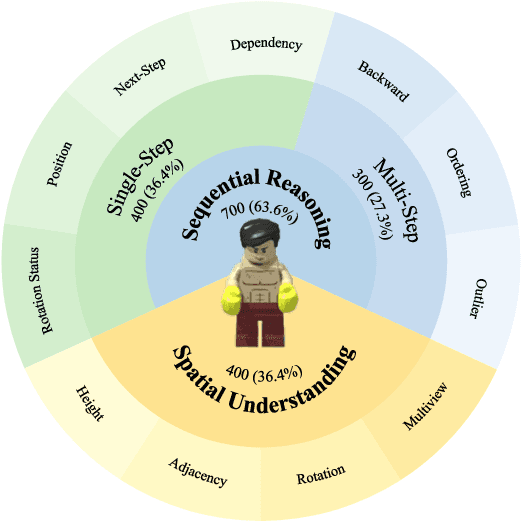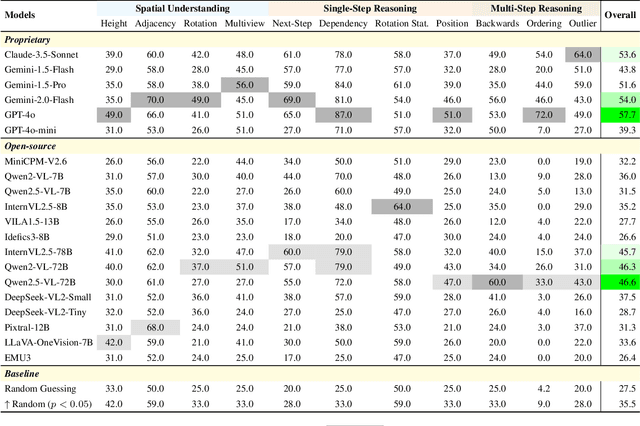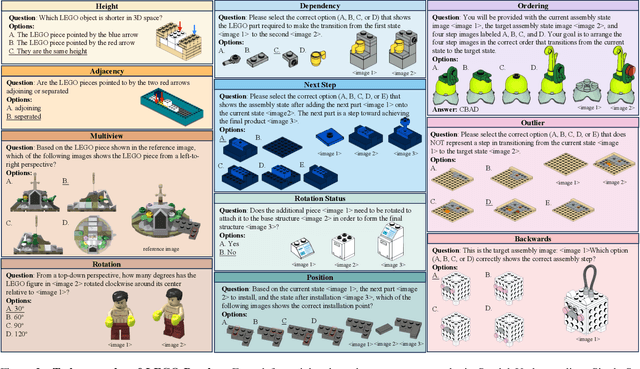Yanan Sun
C-Flat++: Towards a More Efficient and Powerful Framework for Continual Learning
Aug 26, 2025Abstract:Balancing sensitivity to new tasks and stability for retaining past knowledge is crucial in continual learning (CL). Recently, sharpness-aware minimization has proven effective in transfer learning and has also been adopted in continual learning (CL) to improve memory retention and learning efficiency. However, relying on zeroth-order sharpness alone may favor sharper minima over flatter ones in certain settings, leading to less robust and potentially suboptimal solutions. In this paper, we propose \textbf{C}ontinual \textbf{Flat}ness (\textbf{C-Flat}), a method that promotes flatter loss landscapes tailored for CL. C-Flat offers plug-and-play compatibility, enabling easy integration with minimal modifications to the code pipeline. Besides, we present a general framework that integrates C-Flat into all major CL paradigms and conduct comprehensive comparisons with loss-minima optimizers and flat-minima-based CL methods. Our results show that C-Flat consistently improves performance across a wide range of settings. In addition, we introduce C-Flat++, an efficient yet effective framework that leverages selective flatness-driven promotion, significantly reducing the update cost required by C-Flat. Extensive experiments across multiple CL methods, datasets, and scenarios demonstrate the effectiveness and efficiency of our proposed approaches. Code is available at https://github.com/WanNaa/C-Flat.
CharacterShot: Controllable and Consistent 4D Character Animation
Aug 10, 2025Abstract:In this paper, we propose \textbf{CharacterShot}, a controllable and consistent 4D character animation framework that enables any individual designer to create dynamic 3D characters (i.e., 4D character animation) from a single reference character image and a 2D pose sequence. We begin by pretraining a powerful 2D character animation model based on a cutting-edge DiT-based image-to-video model, which allows for any 2D pose sequnce as controllable signal. We then lift the animation model from 2D to 3D through introducing dual-attention module together with camera prior to generate multi-view videos with spatial-temporal and spatial-view consistency. Finally, we employ a novel neighbor-constrained 4D gaussian splatting optimization on these multi-view videos, resulting in continuous and stable 4D character representations. Moreover, to improve character-centric performance, we construct a large-scale dataset Character4D, containing 13,115 unique characters with diverse appearances and motions, rendered from multiple viewpoints. Extensive experiments on our newly constructed benchmark, CharacterBench, demonstrate that our approach outperforms current state-of-the-art methods. Code, models, and datasets will be publicly available at https://github.com/Jeoyal/CharacterShot.
Runtime Analysis of Evolutionary NAS for Multiclass Classification
Jun 06, 2025Abstract:Evolutionary neural architecture search (ENAS) is a key part of evolutionary machine learning, which commonly utilizes evolutionary algorithms (EAs) to automatically design high-performing deep neural architectures. During past years, various ENAS methods have been proposed with exceptional performance. However, the theory research of ENAS is still in the infant. In this work, we step for the runtime analysis, which is an essential theory aspect of EAs, of ENAS upon multiclass classification problems. Specifically, we first propose a benchmark to lay the groundwork for the analysis. Furthermore, we design a two-level search space, making it suitable for multiclass classification problems and consistent with the common settings of ENAS. Based on both designs, we consider (1+1)-ENAS algorithms with one-bit and bit-wise mutations, and analyze their upper and lower bounds on the expected runtime. We prove that the algorithm using both mutations can find the optimum with the expected runtime upper bound of $O(rM\ln{rM})$ and lower bound of $\Omega(rM\ln{M})$. This suggests that a simple one-bit mutation may be greatly considered, given that most state-of-the-art ENAS methods are laboriously designed with the bit-wise mutation. Empirical studies also support our theoretical proof.
Loss Functions for Predictor-based Neural Architecture Search
Jun 06, 2025Abstract:Evaluation is a critical but costly procedure in neural architecture search (NAS). Performance predictors have been widely adopted to reduce evaluation costs by directly estimating architecture performance. The effectiveness of predictors is heavily influenced by the choice of loss functions. While traditional predictors employ regression loss functions to evaluate the absolute accuracy of architectures, recent approaches have explored various ranking-based loss functions, such as pairwise and listwise ranking losses, to focus on the ranking of architecture performance. Despite their success in NAS, the effectiveness and characteristics of these loss functions have not been thoroughly investigated. In this paper, we conduct the first comprehensive study on loss functions in performance predictors, categorizing them into three main types: regression, ranking, and weighted loss functions. Specifically, we assess eight loss functions using a range of NAS-relevant metrics on 13 tasks across five search spaces. Our results reveal that specific categories of loss functions can be effectively combined to enhance predictor-based NAS. Furthermore, our findings could provide practical guidance for selecting appropriate loss functions for various tasks. We hope this work provides meaningful insights to guide the development of loss functions for predictor-based methods in the NAS community.
Rethinking the Stability-Plasticity Trade-off in Continual Learning from an Architectural Perspective
Jun 05, 2025Abstract:The quest for Continual Learning (CL) seeks to empower neural networks with the ability to learn and adapt incrementally. Central to this pursuit is addressing the stability-plasticity dilemma, which involves striking a balance between two conflicting objectives: preserving previously learned knowledge and acquiring new knowledge. While numerous CL methods aim to achieve this trade-off, they often overlook the impact of network architecture on stability and plasticity, restricting the trade-off to the parameter level. In this paper, we delve into the conflict between stability and plasticity at the architectural level. We reveal that under an equal parameter constraint, deeper networks exhibit better plasticity, while wider networks are characterized by superior stability. To address this architectural-level dilemma, we introduce a novel framework denoted Dual-Arch, which serves as a plug-in component for CL. This framework leverages the complementary strengths of two distinct and independent networks: one dedicated to plasticity and the other to stability. Each network is designed with a specialized and lightweight architecture, tailored to its respective objective. Extensive experiments demonstrate that Dual-Arch enhances the performance of existing CL methods while being up to 87% more compact in terms of parameters. Code: https://github.com/byyx666/Dual-Arch.
Adapt before Continual Learning
Jun 05, 2025Abstract:Continual Learning (CL) seeks to enable neural networks to incrementally acquire new knowledge (plasticity) while retaining existing knowledge (stability). While pre-trained models (PTMs) have become pivotal in CL, prevailing approaches freeze the PTM backbone to preserve stability, limiting their plasticity, particularly when encountering significant domain gaps in incremental tasks. Conversely, sequentially finetuning the entire PTM risks catastrophic forgetting of generalizable knowledge, exposing a critical stability-plasticity trade-off. To address this challenge, we propose Adapting PTMs before the core CL process (ACL), a novel framework that refines the PTM backbone through a plug-and-play adaptation phase before learning each new task with existing CL approaches (e.g., prompt tuning). ACL enhances plasticity by aligning embeddings with their original class prototypes while distancing them from others, theoretically and empirically shown to balance stability and plasticity. Extensive experiments demonstrate that ACL significantly improves CL performance across benchmarks and integrated methods, offering a versatile solution for PTM-based CL. Code is available at https://github.com/byyx666/ACL_code.
CARL: Causality-guided Architecture Representation Learning for an Interpretable Performance Predictor
Jun 04, 2025Abstract:Performance predictors have emerged as a promising method to accelerate the evaluation stage of neural architecture search (NAS). These predictors estimate the performance of unseen architectures by learning from the correlation between a small set of trained architectures and their performance. However, most existing predictors ignore the inherent distribution shift between limited training samples and diverse test samples. Hence, they tend to learn spurious correlations as shortcuts to predictions, leading to poor generalization. To address this, we propose a Causality-guided Architecture Representation Learning (CARL) method aiming to separate critical (causal) and redundant (non-causal) features of architectures for generalizable architecture performance prediction. Specifically, we employ a substructure extractor to split the input architecture into critical and redundant substructures in the latent space. Then, we generate multiple interventional samples by pairing critical representations with diverse redundant representations to prioritize critical features. Extensive experiments on five NAS search spaces demonstrate the state-of-the-art accuracy and superior interpretability of CARL. For instance, CARL achieves 97.67% top-1 accuracy on CIFAR-10 using DARTS.
LAS: Loss-less ANN-SNN Conversion for Fully Spike-Driven Large Language Models
May 14, 2025Abstract:Spiking Large Language Models (LLMs) have emerged as an energy-efficient alternative to conventional LLMs through their event-driven computation. To effectively obtain spiking LLMs, researchers develop different ANN-to-SNN conversion methods by leveraging pre-trained ANN parameters while inheriting the energy efficiency of SNN. However, existing conversion methods struggle with extreme activation outliers and incompatible nonlinear operations of ANN-based LLMs. To address this, we propose a loss-less ANN-SNN conversion for fully spike-driven LLMs, termed LAS. Specifically, LAS introduces two novel neurons to convert the activation outlier and nonlinear operation of ANN-based LLMs. Moreover, LAS tailors the spike-equivalent Transformer components for spiking LLMs, which can ensure full spiking conversion without any loss of performance. Experimental results on six language models and two vision-language models demonstrate that LAS achieves loss-less conversion. Notably, on OPT-66B, LAS even improves the accuracy of 2\% on the WSC task. In addition, the parameter and ablation studies further verify the effectiveness of LAS. The source code is available at https://github.com/lc783/LAS
Detect Anything 3D in the Wild
Apr 10, 2025Abstract:Despite the success of deep learning in close-set 3D object detection, existing approaches struggle with zero-shot generalization to novel objects and camera configurations. We introduce DetAny3D, a promptable 3D detection foundation model capable of detecting any novel object under arbitrary camera configurations using only monocular inputs. Training a foundation model for 3D detection is fundamentally constrained by the limited availability of annotated 3D data, which motivates DetAny3D to leverage the rich prior knowledge embedded in extensively pre-trained 2D foundation models to compensate for this scarcity. To effectively transfer 2D knowledge to 3D, DetAny3D incorporates two core modules: the 2D Aggregator, which aligns features from different 2D foundation models, and the 3D Interpreter with Zero-Embedding Mapping, which mitigates catastrophic forgetting in 2D-to-3D knowledge transfer. Experimental results validate the strong generalization of our DetAny3D, which not only achieves state-of-the-art performance on unseen categories and novel camera configurations, but also surpasses most competitors on in-domain data.DetAny3D sheds light on the potential of the 3D foundation model for diverse applications in real-world scenarios, e.g., rare object detection in autonomous driving, and demonstrates promise for further exploration of 3D-centric tasks in open-world settings. More visualization results can be found at DetAny3D project page.
LEGO-Puzzles: How Good Are MLLMs at Multi-Step Spatial Reasoning?
Mar 25, 2025



Abstract:Multi-step spatial reasoning entails understanding and reasoning about spatial relationships across multiple sequential steps, which is crucial for tackling complex real-world applications, such as robotic manipulation, autonomous navigation, and automated assembly. To assess how well current Multimodal Large Language Models (MLLMs) have acquired this fundamental capability, we introduce \textbf{LEGO-Puzzles}, a scalable benchmark designed to evaluate both \textbf{spatial understanding} and \textbf{sequential reasoning} in MLLMs through LEGO-based tasks. LEGO-Puzzles consists of 1,100 carefully curated visual question-answering (VQA) samples spanning 11 distinct tasks, ranging from basic spatial understanding to complex multi-step reasoning. Based on LEGO-Puzzles, we conduct a comprehensive evaluation of state-of-the-art MLLMs and uncover significant limitations in their spatial reasoning capabilities: even the most powerful MLLMs can answer only about half of the test cases, whereas human participants achieve over 90\% accuracy. In addition to VQA tasks, we evaluate MLLMs' abilities to generate LEGO images following assembly illustrations. Our experiments show that only Gemini-2.0-Flash and GPT-4o exhibit a limited ability to follow these instructions, while other MLLMs either replicate the input image or generate completely irrelevant outputs. Overall, LEGO-Puzzles exposes critical deficiencies in existing MLLMs' spatial understanding and sequential reasoning capabilities, and underscores the need for further advancements in multimodal spatial reasoning.
 Add to Chrome
Add to Chrome Add to Firefox
Add to Firefox Add to Edge
Add to Edge